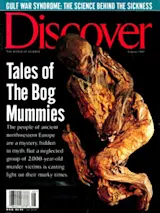Meteors and comets have struck Earth repeatedly. One may have wiped out the dinosaurs 65 million years ago. The big question, of course, is when will the next one hit? Peter Jenniskens, an astronomer at the NASA Ames Research Center near Mountain View, California, hasn’t found the next killer comet, but he has discovered something almost as ominous: the orbit of an as yet unseen comet that could one day slam into Earth.
Jenniskens pieced together the orbit by studying meteor showers, which are essentially comet flotsam vaporizing in our atmosphere. As a comet travels through the solar system on its circuit around the sun, it leaves a trail of debris, like trash spilled from a speeding garbage truck. This debris continues to follow the parent comet’s orbit long after the comet itself has returned to the outer reaches of the solar system. If the trail happens to cross Earth’s ...














